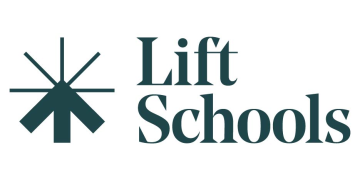The government must create national training standards on restraint for school staff as part of new guidance on the use of reasonable force in schools, the equalities watchdog has said.
The Equality and Human Rights Commission also warned “imprecise” definitions of “reasonable force” and “seclusion” in the draft guidance could place teachers and children in “jeopardy”.
The watchdog has published its response to the government’s consultation, which ran until April this year on the “use of reasonable force and other restrictive interventions in schools”.
Its draft guidance, the first update since 2013, stated schools should prioritise de-escalation over restraint and record every “significant” use of force and report them to parents “as soon as practicable”.
National training standards
The EHRC has this week urged the DfE to create “national training standards for restraint”.
It said almost half of schools agreed that “clear, nationally-agreed standards for training would help them”.
Its inquiry report found some evidence training “may not always have a positive impact on the use of restraint”.
Analysis of family testimony concluded the number of restrictive interventions was “higher when staff had received training”.
“This underlines the need for national training standards for restraint that reflect human rights law and standards, such as the requirement for a lawful basis for restraint and the requirements to be necessary and proportionate.”
More precise definitions
The EHRC has also called for more “precise” definitions of reasonable force and seclusion in the guidance.
The draft DfE guidance defines reasonable force as “physical contact by a member of staff on a pupil to control or restrain their actions/movements.
“Reasonable means using no more force than is necessary for the least amount of time, the application of which will depend on the circumstances. Any use of reasonable force is an example of a restrictive intervention and may or may not involve the use of restraint.”
The EHRC recommended the guidance and proposed definition of reasonable force “explains that ‘reasonable’ must be interpreted narrowly, and that the definition is informed by human rights law principles of legality, necessity and proportionality”.
It said the definition in the guidance should state that restraint must only be used in the three circumstances set out in law.
These are to stop pupils committing any offence, causing personal injury or damage to the property of any person or prejudicing the maintenance of good order and discipline.
It should also state that restraint should only be used “when necessary”, and “proportionately, with no more force, and for no longer than is required by the circumstances”.
Acknowledge ‘psychological harm‘ of seclusion
“Seclusion” is defined by the DfE as “the supervised confinement and isolation of a pupil, away from other pupils, in an area from which the pupil is prevented from leaving of their own free will”.
The EHRC said this should be updated to include “further detail about the multiple practices in schools that may fall under this definition, often referred to in a variety of ways.”
It pointed to the example of “informal exclusions”, which “may be referring partly to forms of seclusion that schools often explicitly refer to as ‘internal exclusion’”.
The watchdog also warned there was currently “no clear acknowledgement” in the guidance of the “potential for psychological harm from seclusion.
“The guidance should be clear at the outset on the risks to children,” they added.
Significant gaps
An earlier inquiry by the human rights watchdog found “inconsistency and uncertainty” over what schools should include in their restraint policies, and found a “significant proportion” wanted “better and more specific guidance”.
John Kirkpatrick, chief executive of the EHRC, said while the proposed guidance aligns with their own framework, there were still ‘significant gaps’.
“The proposed guidance positions important considerations like necessity and proportionality as optional, where they are in fact legally required. This potentially places both staff and children in jeopardy.
“We are calling on the Department for Education to reframe the guidance to consider key human rights principles and introduce a national training standard for the restraint of children.”








Your thoughts